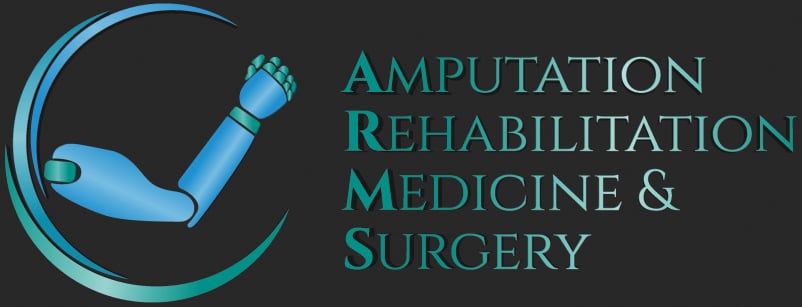Understanding TMR and Its Impact
After an amputation, the nerves that once connected to your limb remain active, often leading to painful neuromas—bundles of nerve endings that form as your body tries to heal. Neuromas can cause chronic pain, phantom limb sensations, and discomfort that makes prosthetic use challenging - it’s like having a broken power line that is still active within your residual limb.
Targeted Muscle Reinnervation (TMR) surgery is an advanced microsurgical procedure that transfers these nerves to nearby nerves that control functionally redundant muscles, giving them a new purpose and effectively fixing the broken power line. This helps reduce pain, improves muscle activation, and creates a stronger foundation for intuitive prosthetic control.
How TMR Works
.jpg?width=611&height=611&name=banner4%20(1).jpg)
Step 1: Identifying Painful Nerves
Our surgeons use advanced imaging and assessment techniques to locate residual nerves causing pain or limiting mobility.

Step 2: Microsurgical Nerve Reassignment
Using precise microsurgical techniques, the identified nerves are rerouted to nearby nerves that control functionally redundant muscles.

Step 3: Optimizing Recovery
By reconnecting nerves to functional muscles, TMR alleviates pain and improves the responsiveness of prosthetic devices, giving patients more natural and intuitive control.
Is TMR Right for You?
Our team will assess your unique situation and help determine if TMR aligns with your recovery goals. It may be a good option for you if you’re experiencing:
Phantom limb pain that hasn’t responded to other treatments
Residual limb pain caused by nerve endings forming painful neuromas
Prosthetic challenges due to limited or imprecise control
What to Expect With TMR Surgery
%20(T3)%20-%20before.jpg?width=715&height=484&name=ARMS%20-%20Targeted%20Muscle%20Reinnervation%20(TMR)%20(T3)%20-%20before.jpg)
Before Surgery
TMR can be performed either during an amputation procedure (immediate TMR) or as a separate procedure after an amputation (delayed TMR). Immediate TMR offers the potential for quicker recovery, enhanced prosthetic control, and an earlier return to daily activities. Our team will guide you in determining the best timing for your TMR based on your unique needs and goals.
%20(T3)%20-%20surgery.jpg?width=715&height=484&name=ARMS%20-%20Targeted%20Muscle%20Reinnervation%20(TMR)%20(T3)%20-%20surgery.jpg)
During Surgery
Your surgeon will carefully make incisions around the residual limb to access the major nerves that once controlled the amputated limb. Using advanced microsurgical techniques, these nerves are cut and then meticulously rerouted into nerves that control nearby functionally redundant muscles. This process allows the nerves to establish new functional pathways, reducing pain and improving control for prosthetic use.
%20(T3)%20-%20after.jpg?width=715&height=484&name=ARMS%20-%20Targeted%20Muscle%20Reinnervation%20(TMR)%20(T3)%20-%20after.jpg)
After Surgery
- Closely monitor bleeding, circulation, and nerve function
- Perform frequent neurological checks to ensure proper healing
- Immobilize and protect your affected limb to support recovery
- Provide medication to effectively manage any post-surgical discomfort
Why Choose ARMS for TMR?
Our team combines advanced expertise in TMR with a deep commitment to your recovery, guiding you toward relief and renewed confidence.
Expertise in Microsurgical Procedures
Our surgeons are leaders in nerve reconstruction and microsurgical techniques, ensuring precise and effective outcomes.
Comprehensive Care Under One Roof
At ARMS, your TMR surgery is seamlessly coordinated with prosthetic specialists and rehabilitation experts to ensure every step of your recovery is covered.
Personalized Treatment Plans
We take the time to understand your pain, challenges, and goals, delivering care that’s as empathetic as it is effective.
Take the First Step Toward Relief

Frequently Asked Questions About TMR
TMR, or Targeted Muscle Reinnervation, is a microsurgical procedure that reassigns nerves from the amputated limb to nearby healthy nerves that control functionally redundant muscles. By creating new nerve pathways, this process reduces painful neuromas, alleviates phantom limb pain, and improves prosthetic control.
If you experience chronic phantom limb pain, neuroma-related pain, or difficulty controlling your prosthetic, you might be a candidate. Our team will evaluate your unique situation and discuss whether TMR for amputees is the right option for you.
Full healing and improved functionality may take several weeks to months, depending on your individual situation. Rehabilitation and therapy may also be recommended to maximize results.
TMR is performed under general anesthesia, so you won’t feel pain during the procedure. Some temporary soreness or swelling after surgery is normal, but most patients report significant relief from chronic pain as they recover.
By rerouting nerves to muscles, TMR enhances your ability to control a prosthetic device. The reassigned nerves send stronger, more precise signals, resulting in smoother and more intuitive movement.
Yes, all patients benefit from therapy after TMR to strengthen muscle responses and improve prosthetic control. Our multidisciplinary team will work with you to create a personalized therapy plan.
TMR is often covered by insurance, but coverage can vary depending on your provider and plan. Our team can help guide you through the process and provide any necessary documentation.


.jpg?width=715&height=715&name=tmr%20(1).jpg)
